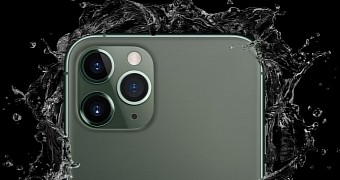Apple no longer shares any data on iPhone sales, so nobody knows for sure how the new-generation iPhone performed in the first weekend on the market or how many units have been pre-ordered.
What we do have instead are estimates from Apple analysts across the world, and judging from their forecasts, iPhone 11 is already a big hit.
By the looks of things, the new-generation iPhone is selling so fast that it’s already out of stock in several key markets, which for some is totally surprising given that the top-of-the-range iPhone 11 Pro Max reaches nearly $1,500.
On the other hand, several analysts confirmed iPhone 11, the standard model with an LCD screen, is the best-selling model in markets like China and India, and this is mostly because it comes at a lower price than all the other siblings.
iPhone 11 costs $699 in the United States, down from $749, the price of the iPhone XR, which is the model it replaces.
But while so many people rush to buy the iPhone 11, I’m going to pass on this one. The reason isn’t the one most people point to when refusing to buy an iPhone 11 and has nothing to do with the actual features of this year’s model.
In fact, iPhone 11 might be worthy buy, and the upgrades that Apple made in the camera department clearly turn it into the best camera on an iPhone ever. The camera alone is reason enough for some to upgrade.
But for me, it’s not. And the top reason not to get and iPhone 11 is… the 2020 iPhone.
I know it might be too early to discuss the next-generation iPhone, but Apple is working on it already and rumor has it the new model will be absolutely fabulous.
By the looks of things, we’ll have 5G, which is something that’ll become more widely adopted in more countries by the time the 2020 iPhone launches, even better cameras, OLED on all iPhones, and possibly even stylus support. Touch ID is also rumored to make a return to be offered alongside Face ID, and there’s even a chance that the notch gets the ax once and for all.
Once the iPhone 11 successor makes the switch to OLED as well, the cheapest iPhone itself will become a more compelling product. So why should you buy one today with LCD and not wait one more year to get the upgraded screen version?
All the reasons that I mentioned above make the 2020 iPhone an upgrade to drool after. And at the same time, they make the 2019 iPhone generation a transition model that’s only supposed to pave the road for bigger changes coming next year.
Spending nearly $1,000 on a smartphone isn’t something that everyone does so easily, and statistics have shown that the upgrade pace is slowing down, with more and more customers holding on to their devices for longer these days. This means the typical upgrade happens every three or even four years, so more dramatic overhauls, like the 2020 iPhone, would be more successful than transition models like this year’s.
The typical Apple fanboy obviously doesn’t agree with skipping an iPhone generation, and the most used argument is the performance boost. But is a performance upgrade really worth $1,000?
I’m still seeing lots of people holding on to the iPhone 7 or iPhone 8 just because they don’t necessarily need the latest in terms of cameras, and this shows just how much the upgrade pace has slowed down lately.
If the same approach is maintained, super-cycles might only happen every time substantial upgrades are released, which typically happens every two or three years. And this makes total sense. But Apple’s (and everyone else’s) big challenge is to keep customer entertained in the meantime.
So the key question right now is this: is iPhone 11 really worth the price? Not for me.

 14 DAY TRIAL //
14 DAY TRIAL //